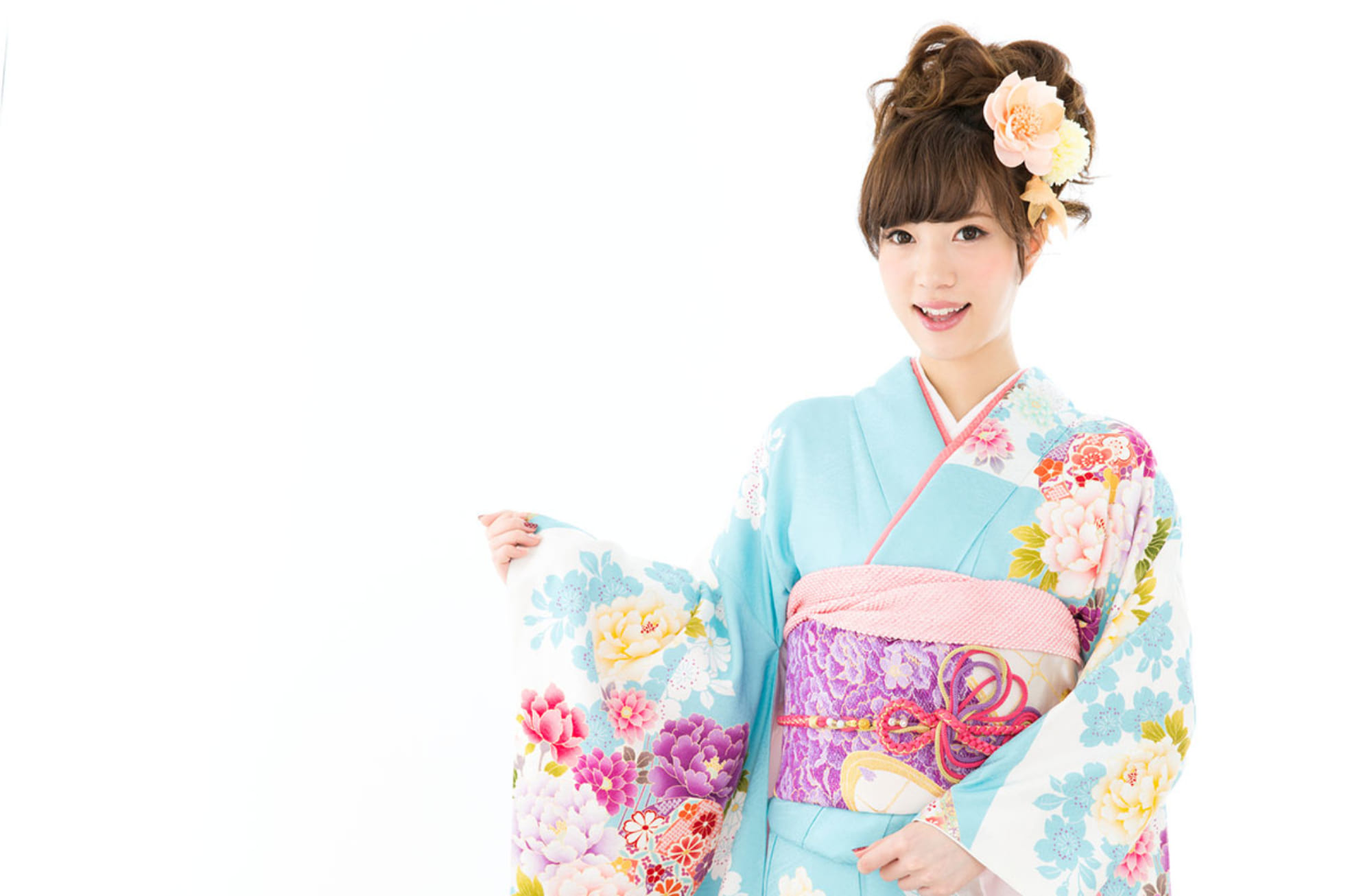Iro tomesode
This is a formal kimono that can be worn by both married and unmarried women.
An iro tomesode with five family crests is considered as formal as a kuro tomesode, but can only be worn to formal events. Those with three or one crests are considered less formal, and can be worn to receptions and parties. Although the kuro tomesode is traditionally considered the more formal kimono, the iro tomesode is worn at events in the imperial palace, where black is traditionally avoided. An iro tomesode without any crests is considered equal to a homongi. in other countries, a crested iro tomesode is often worn by Japanese women as formal evening wear.
Iro tomesode is usually made from rinzu (satin), mon isho chirimen (crepe) or donzu (glossy damask), and dyed with an elegant design at the hem.
An iro tomesode with five crests is usually matched with white accessories, similar to a kuro tomesode. Those with three or one crests can be matched with light-colored obiage and obijime. Embroidered accessories can also be used.
[quote style=”boxed”]In Japanese
色留袖
既婚未婚関係なく着られる祝儀のための第一礼装です。
五つ紋なら黒留袖と同格の正装になりますが、着て行く場が限られます。三つ紋や一つ紋では準礼装になります。披露宴や祝賀会、パーティーなどは三つ紋や一つ紋を付けて広く着ることができます。まだ黒留袖の方が一般的には正式とみなされることが多いようですが、宮中行事などでは黒は避ける慣例があり、紋付の色留袖が正装です。紋なしでは訪問着と同じ感覚で着ることもできます。最も華やかな礼装で、海外のパーティーなどでは日本女性と一目でわかり、紋付きのものも好ましく思われるようです。
色留袖の生地には、地紋のある綸子や紋意匠縮緬、光沢のある緞子などが用いられ、裾には格調高い模様が染められています。
五つ紋では黒留袖と同じく白で小物を、三つ紋や一つ紋付きでは淡い色の帯揚げや帯締めで装うこともできます。白に色が近いほど格が高いとされますが、刺しゅうなどの入ったものもパーティーなどでは華やかになります。
[/quote]
